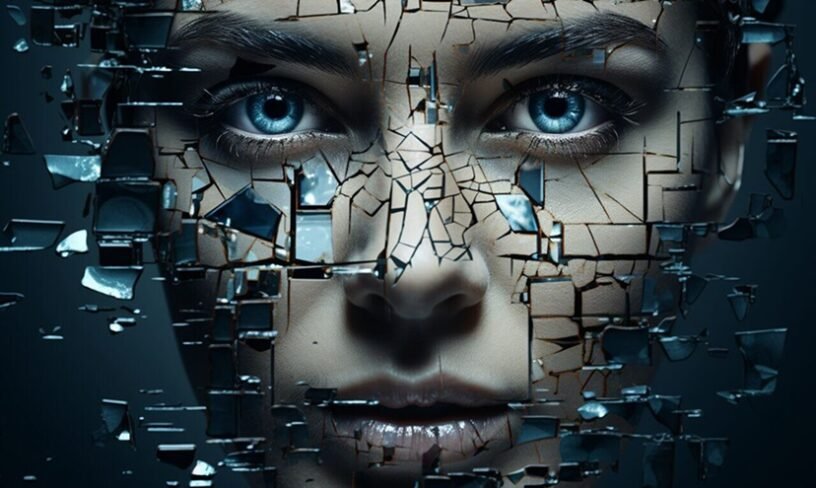Table of Contents
Introduction : Deepfake Tools
Hey there, tech enthusiasts and curious minds! Have you ever wondered how those jaw-dropping videos of celebrities saying hilarious things or historical figures coming to life are made? Welcome to the intriguing world of deepfakes! In 2024, this technology has become more accessible than ever, thanks to a plethora of free tools. Let’s dive into the top 5 free deepfake tools that are transforming the digital landscape and how you can use them.
1. DeepFaceLab
Let’s start with the king of the hill, DeepFaceLab. If you’ve been dabbling in deepfakes, you’ve probably heard of this one. It’s the go-to tool for many enthusiasts and professionals alike.
Why it’s awesome:
- Customization: DeepFaceLab offers extensive customization options, allowing users to tweak almost every aspect of the deepfake process.
- Community Support: With a large community, you’ll find plenty of tutorials, forums, and resources to help you get started or solve any issues.
Real-life example: Ever seen those deepfake videos where an actor’s face seamlessly replaces another in a famous movie scene? Chances are, DeepFaceLab was involved. Imagine swapping yourself into a scene from your favorite movie for a birthday surprise or a quirky social media post!
2. Faceswap
Next up is Faceswap. True to its name, this tool is all about swapping faces in videos and images with stunning accuracy.
Why it’s awesome:
- User-Friendly Interface: Faceswap boasts a more approachable interface compared to some of its competitors, making it ideal for beginners.
- Versatility: It supports a wide range of video formats and provides various training options to improve the quality of your deepfakes.
Real-life example: Think about making a fun video for a friend’s wedding, where you replace the faces in a classic romantic movie with the bride and groom. Faceswap makes such creative projects possible and incredibly entertaining!
3. Avatarify
Ever wanted to bring a photo to life in a video call? Avatarify is your tool! This unique software allows you to animate any image and use it in real-time during video calls.
Why it’s awesome:
- Real-Time Performance: Avatarify works in real-time, so you can animate your favorite characters or even your pet during live calls.
- Ease of Use: It’s straightforward to set up, and you can start animating faces with minimal effort.
Real-life example: Imagine joining a Zoom call for a team meeting while looking like Einstein or a beloved fictional character. It’s a fantastic icebreaker and a way to add a bit of fun to otherwise mundane meetings.
4. Reface App
Reface App is perfect for those who want to create quick and funny deepfakes without delving into complex software. Available on both Android and iOS, it’s a mobile-friendly option for creating deepfakes on the go.
Why it’s awesome:
- Simplicity: With just a few taps, you can swap faces in videos, GIFs, and memes.
- Extensive Library: Reface has an extensive library of videos and GIFs to choose from, making it easy to find the perfect clip for your face swap.
Real-life example: Use Reface to put yourself into iconic movie scenes or hilarious viral videos, then share them on social media. It’s a fun way to surprise your friends and family or make your posts stand out.
5. MyHeritage Deep Nostalgia
Finally, let’s talk about a tool with a touch of sentimentality – MyHeritage Deep Nostalgia. This tool animates old photos, bringing your ancestors to life in a way you’ve never seen before.
Why it’s awesome:
- Emotional Impact: Deep Nostalgia can animate faces in old family photos, making them blink, smile, and move their heads. It’s like seeing your great-grandparents come to life!
- Ease of Use: Simply upload a photo, and Deep Nostalgia does the rest. It’s incredibly user-friendly.
Real-life example: Imagine animating a photo of your grandparents on their wedding day and sharing it with your family. It’s a beautiful way to connect with your heritage and bring cherished memories to life.
Wrapping Up
Deepfake technology has come a long way, and these free tools make it accessible for anyone to experiment with and enjoy. Whether you’re looking to create hilarious videos, enhance your video calls, or breathe new life into old photos, there’s a tool out there for you. Remember to use these tools responsibly and be mindful of the ethical implications. Happy deepfaking!
What’s your favorite deepfake tool or project? Let us know in the comments below!

Frequently Asked Questions About Deepfake Tools
What software is used for deepfakes?
Deepfakes are created using various software tools that leverage machine learning algorithms, particularly deep learning techniques. Some of the most popular software used for creating deepfakes include:
- DeepFaceLab: One of the most widely used tools, known for its extensive customization options and powerful capabilities.
- Faceswap: Another popular tool that is user-friendly and versatile, making it suitable for both beginners and advanced users.
- Avatarify: Specializes in real-time face animation, allowing users to bring static images to life during video calls.
- Reface App: A mobile app that lets users swap faces in videos, GIFs, and memes with just a few taps.
- MyHeritage Deep Nostalgia: Focuses on animating old photos to make them look like they’re moving, bringing historical figures and loved ones to life.
These tools use sophisticated algorithms to analyze and map facial features, creating seamless and realistic deepfakes.
Are deepfakes illegal?
The legality of deepfakes depends on the context and jurisdiction. Here are some key points to consider:
- Consent: Creating and sharing deepfakes of individuals without their consent can lead to legal issues, particularly if the content is defamatory, invasive of privacy, or used for malicious purposes.
- Defamation and Harassment: Deepfakes that harm someone’s reputation or are used for harassment can result in legal action.
- Intellectual Property: Using someone else’s likeness, especially celebrities or public figures, without permission can infringe on their intellectual property rights.
- Regulations: Some countries and regions are enacting laws specifically targeting the misuse of deepfakes. For example, in the United States, certain states have laws against deepfakes used for election interference or non-consensual pornography.
Always ensure you have the necessary permissions and use deepfake technology responsibly to avoid legal repercussions.
Is there any free deepfake software?
Yes, there are several free deepfake software tools available. Some of the top free deepfake tools include:
- DeepFaceLab: Offers powerful features and customization options for free.
- Faceswap: An open-source tool that is available for free and supports a wide range of functionalities.
- Avatarify: Free to use, especially popular for real-time face animations during video calls.
- Reface App: Free to download with optional in-app purchases for additional features.
- MyHeritage Deep Nostalgia: Free for animating a limited number of photos, with more advanced features available via subscription.
These tools provide a great starting point for anyone interested in exploring the world of deepfakes without spending money.
Are there deepfake detection tools?
Yes, as deepfakes become more sophisticated, the development of deepfake detection tools has also advanced. Here are some notable deepfake detection tools:
- Deepware Scanner: A free tool that analyzes video files and detects potential deepfakes by identifying signs of manipulation.
- Microsoft Video Authenticator: This tool assesses videos and provides a confidence score indicating the likelihood of the video being artificially altered.
- Sensity AI: Formerly known as Deeptrace, Sensity AI offers deepfake detection services that analyze and identify deepfake content in videos and images.
- Reality Defender: A tool that scans multimedia content and provides real-time deepfake detection for various applications.
- Deepfake-o-meter: A web-based tool that allows users to upload videos and get an analysis of whether the content has been altered using deepfake technology.




2 Pingbacks